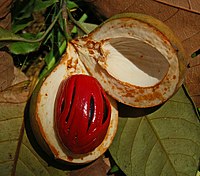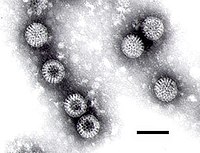
WebHERV: A Web Server for the Computational Investigation of Gene Expression Associated With Endogenous Retrovirus-Like Sequences
Sign Up to like & getrecommendations! Published in 2018 at "Frontiers in Microbiology"
DOI: 10.3389/fmicb.2018.02384
Abstract: More than eight percent of the human genome consists of human endogenous retroviruses (HERVs). Typically, the expression of HERVs is repressed, but varying activities of HERVs have been observed in diseases ranging from cancer to… read more here.
Keywords: like sequences; webherv web; expression; web server ... See more keywords

The RGF/GLV/CLEL Family of Short Peptides Evolved Through Lineage-Specific Losses and Diversification and Yet Conserves Its Signaling Role Between Vascular Plants and Bryophytes
Sign Up to like & getrecommendations! Published in 2021 at "Frontiers in Plant Science"
DOI: 10.3389/fpls.2021.703012
Abstract: Short secreted plant peptides act as key signaling molecules and control a plethora of developmental and physiological processes. The ROOT GROWTH FACTOR (RGF)/GOLVEN (GLV)/CLE-Like (CLEL) family of peptides was discovered to be involved in root… read more here.
Keywords: vascular plants; like sequences; clel family; rgf like ... See more keywords

Genomic Analysis Unveils the Pervasiveness and Diversity of Prophages Infecting Erwinia Species
Sign Up to like & getrecommendations! Published in 2022 at "Pathogens"
DOI: 10.3390/pathogens12010044
Abstract: Prophages are abundant elements integrated into bacterial genomes and contribute to inter-strain genetic variability and, in some cases, modulate the environmental behavior of bacteria, such as pathogen virulence. Here, we described prophage occurrence and diversity… read more here.
Keywords: erwinia; diversity; prophage like; erwinia spp ... See more keywords

2A and 2A-like Sequences: Distribution in Different Virus Species and Applications in Biotechnology
Sign Up to like & getrecommendations! Published in 2021 at "Viruses"
DOI: 10.3390/v13112160
Abstract: 2A is an oligopeptide sequence that mediates a ribosome “skipping” effect and can mediate a co-translation cleavage of polyproteins. These sequences are widely distributed from insect to mammalian viruses and could act by accelerating adaptive… read more here.
Keywords: like sequences; sequences distribution; stranded rna; different virus ... See more keywords